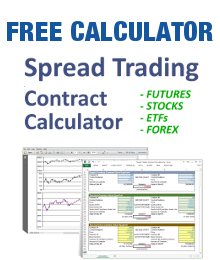Assuming you’ve built a potentially profitable trading model in Excel, have backtested it thoroughly on multiple time frames, multiple historical periods, and multiple securities, and you are satisfied that it will be profitable over time, the next step is to run it in “live demo mode.”
When you build an automated trading model, you don’t just set it free in the markets. You need to run it on real market data to ensure it’s working properly. You need to record the model’s trading results using reasonable asssumptions for commissions, slippage, and system uptime. You need to analyze those results and calculate the same statistics that your backtesting model generates. Compare the demo results with your backtesting results on the same data to determine if you original assumptions were reasonable.
This entire process is known as “walk-forward testing on live data.” The purpose is to eliminate the ever-present possibility of “curve fitting” your backtesting results to one possible historical state (which results in a perfect money-losing machine.)
In order to run your model in walk-forward or demo mode you need:
- For intraday systems, a demo account from your broker that creates reasonable theoretical trade prices, commissions, and slippage.
- For end of the day (or week) systems, an end of day (or week) data set for your selected security list with accurate prices (assuming you execute trades the next day).
- A tracking Excel workbook that calculates P&L, cumulative equity, and other trade statistics. These should be the same ones in your backtesting model preferably.
- A Monte Carlo simulation tool that allows you to take the demo trade results and “scramble” them to simulate multiple “alternative realities” that your trading model and the markets could have created. The Monte Carlo simulation tool must have the capability to analyze and produce statistics on the simulated return distributions. This guarantees you take into account a range of best case, worst case, and typical outcomes.
- A walk-forward testing log that records your testing steps, the time period, securities, market conditions, etc. and allows you to analyze the results against both historical backtests and future “live” trading.
Once you walk-forward test your Excel trading model in demo mode, you will have a much better understanding of its returns, risks, and market behavior. You will also run into problems that you never anticipated and will need to devise solutions to them.
Only if you are completely satisfied that your trading model will be profitable over a range of conditions, with an acceptable risk profile, you can keep the system running technically, and you can properly capitalize your account to trade it, will your Excel trading model be ready for “live trading”.





